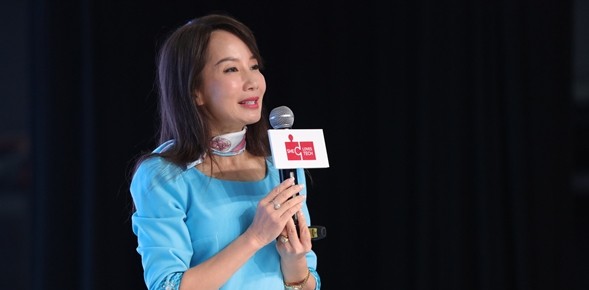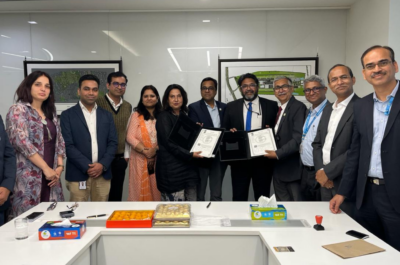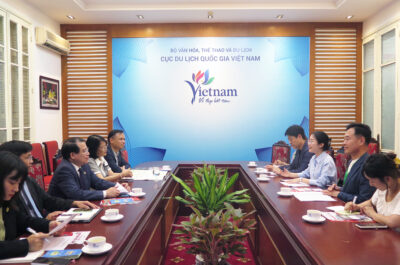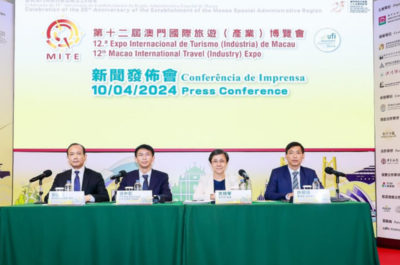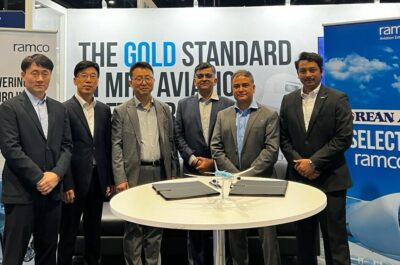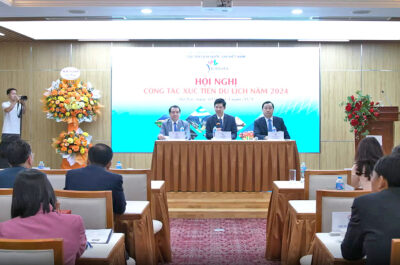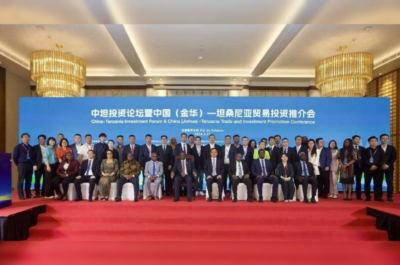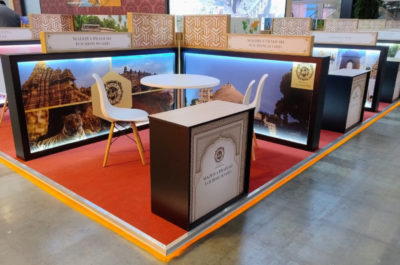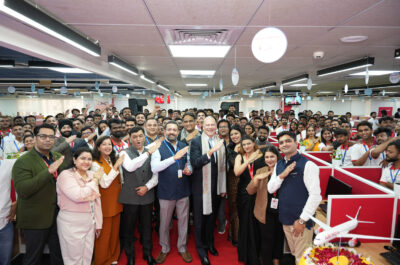Beginning with a recap of the four technological revolutions, she noted that technological advances have freed workers from complicated and repetitive jobs and enabled thinkers to think deeper and engage in more creative work.
BEIJING – On September 16, Ctrip CEO Jane Sun attended “She Loves Tech” Global Startup Competition in Beijing and gave a keynote speech titled “A New Dawn: Opportunities that Technology is Creating for Women, Peace and Prosperity”. Jane elaborated how technological development is changing women’s status and explained how Ctrip was creating better job opportunities for women.
As the only female CEO in the online travel industry, Jane runs the world’s second largest OTA (online travel agency), Ctrip, with a market capitalization of nearly USD 30 billion. She’s been recognized by Forbes China Power Women List, featured on the cover of Forbes Magazine, and earned the title of “Most Creative People” from Fast Company.
Technological revolution unleashes women’s creativity
Beginning with a recap of the four technological revolutions, she noted that technological advances have freed workers from complicated and repetitive jobs and enabled thinkers to think deeper and engage in more creative work. The steam engine, the symbol of the first technological revolution, turned craftsmen into workers and engineers.
The second technological revolution gave rise to electricity which significantly improved the efficiency of machines, and the third revolution brought the Internet and advanced computing power, which was the precursor to today’s universal smart phones. In the future, AR and VR will even eliminate the need for physical devices.
Today, we are in the midst of the fourth technological revolution that features AI, big data and cloud computing. These technologies are making us more creative. The first two revolutions facilitated gender equality in the physical sense, but the third and fourth ones are improving gender equality in terms of knowledge and vision.
As the intellectual equal of men, women today enjoy more and better opportunities thanks to technological progress. Even in the competitive arena of venture capital investments in technology and Internet, women’s presence has been significant. For example, 17 percent of the partners at venture capital firms in China are women, compared with 10 percent in the US. Also, 80 percent of China’s investment companies have at least one female partner, compared with only 50 percent in the US. It’s worth noting that women has had a hand in founding 55 percent of Internet startups over the last three years in China.
Another set of numbers, however, shows that China still has a long way to go to improve its women’s status. Women only take 10 percent of director seats at global top 500 companies, and female CEOs only account for 3 percent of the names on the world’s fortune list. In recent years, only 23 percent of the deputies to the People’s Congress are women. China has jumped to second place in terms of economic size in the world ranking, but when it comes to gender equality, it ranks 69th.
“She Loves Tech” is a global initiative for women in technology to unleash their potential. This event, jointly launched by Lean In China and TechRock, showcases the convergence of the latest trends in technology, entrepreneurship, innovation and its impact on and opportunities for women and draws attention to woman-benefiting technologies and female leadership in the tech world.
Ctrip is building female leadership on all fronts
Ctrip leads the Chinese and global technology sector by example. Data shows that in 2016 the top 25 technology companies in Silicon Valley have 19.6 percent female employees on average, while Ctrip female representation stands over 50 percent. Ctrip is the benchmark for women representation compared to peers in China and Silicon Valley.
When looking at female representation in mid-and-high-level management positions, Ctrip remarkable have 34 percent of executive management positions and nearly 50 percent of mid-level management positions that are women. At Ctrip, apart from Jane as the CEO, both Ctrip’s COO (Maria Sun) and CFO (Cindy Wang). Ctrip’s C-level and Vice President level positions are well represented by women.
As Jane sees it, some typical feminine characters have become unique advantages in the technology industry and in particular when applied in the tourism industry. “For example, the attention to details, the ability to communicate and the willingness to service can help enhance the overall customer experience.“
In her speech, Jane shared her observation of gender differences from a manager’s perspective. She pointed out that women and men each have their strengths and weaknesses. For instance, men are more task-oriented, while women are more sensitive to people when doing their jobs; men often perform better when competition is introduced, while women may value more on win-win scenarios.
At Ctrip, men may drive bigger decision making while women may focus more on details and implementation. “Therefore, good leadership relies on a healthy mix of male and female team members. For any team to perform better, cross-gender collaboration is a must“.
According to Jane, Ctrip will continue to improve gender equality, never set gender-based barriers in recruitment, and practice “same work, same pay”. She expressed her hope to influence more women in the workplace and foster an environment for women to realize their potential in the workplace. “The development of Ctrip’s global business is closely connected with our female leadership – a focus on win-win, efficient implementation“.
Provide women with workplace benefits
A survey on Chinese women’s psychological health and happiness suggests professional women are much happier than full-time housewives. Women’s psychological health and happiness are closely linked to the environment they work in, more so than to their family.
With the two-child policy now in force, work-parenting balance has become a hard-to-ignore social topic. Ctrip is among the first companies to allow male and female employees to bring their children to work. The nursery Ctrip set up last year at its Shanghai headquarters is intended to help employees resolve the issue of their pre-kindergarten children (between the age of 1.5 to 3.5 years old) care.
Besides the workplace nursery, Ctrip has provided its staff with other benefits as well. These include summer/winter vacation nursery classes, breast-feeding rooms, etc. The aim is to make life easier for its employees and help them better balance work/life and plan for their career development.
It is worth noting that last month Jane signed the CEO Statement of Support for Women’s Empowerment Principles (WEPs), bringing those principles to her company. “I admire the way Ctrip values its female employees and the modern progressive approach it takes to care for women”, UN Women China officer Julia Broussard subsequently commented.
At Ctrip, there are not only female managers and engineers driving innovation but also female employees and users who benefit from its proactive female initiatives. At Ctrip, the term gender equality is not just a statement nor a goal, it is being applied already.
Photo caption: Ctrip CEO Jane Sun speaks at “She Loves Tech” forum.
Angelos is the news editor for TravelDailyNews Media Network (traveldailynews.gr, traveldailynews.com and traveldailynews.asia). His role includes to monitor the hundrends of news sources of TravelDailyNews Media Network and skim the most important according to our strategy. He currently studies Communication, Media & Culture in Panteion University of Political & Social Studies of Athens.












